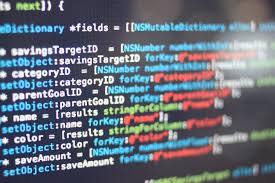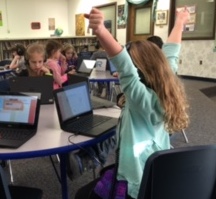*blogging has been rebranded as “content marketing.” I had to look it up.
We are adjusting back to normal after our temporary shiny cute vibrantly-colored pop-up store that is the Scholastic Book Fair. It was a tremendous undertaking that only the joy of book-focused students and their generous, accomodating grandparents makes worthwhile.
My last blog entry was exactly a year ago. There are plenty of reasons why..however I think I’m still asking for Covid-related grace. A parent told me the other day she missed my blog and I was so pleased to know I had a bonified reader, I hastily promised to remake the committment to create new content. (See note above, no one blogs anymore!)
So here’s what we have been doing since September: 1. Digital Citizenship check in: what do students remember, what habits have they adopted, how many are on devices daily, etc. signed a digital citizenship pledge.
2. 9/11 with light focus on the terrorist event, and heavy focus on national unity and community helpers.

3. Hispanic American History, with this guiding thought as we watched a collection of videos about different countries: “Hispanic language and culture is evident in most areas of the Americas today, and it’s important to understand how different Hispanic cultures have greatly influenced our American culture and way of life. In the United States alone, it is estimated that over 50 million Hispanics or Latinos live in the U.S” (vistahigherlearning.com)
4. Washington State’s “Disability History Month:” Learning from kids and young adults about how they deal with and overcome ADHD, dyslexia and autism was illuminating for all the students; especially those who share the disgnosis, (or have brothers and sisters who do).
WHAT!? Tom Cruise has dyslexia?!”
(5 different 3rd/4th grade boys)
5. Why people love scary stories, and an attempt at writing two-sentence spooky stories of their own. Halloween history and traditions. The Fall Ball was an absolute joyous event that I was fairly involved in and delighted to be a part of. Even though I can’t really explain my last-minute costume here.?

6. We learned about the history importance of Veteran’s Day as well as participate in a veterans assembly that my collleagues Mrs. Bofenkamo and Ms Brasch organized because I was overwhelmed with the Book Fair.
7. THE BOOK FAIR. I love hearing parents talking with their kids about what their just right books might be–sometime barging in on conversations with data such as what other books their children have checked out this year and thus what they might most enjoy. 🙂 I know I have posted elsewhere but I appreciate so much sharing my library space with grandparents!

As far as core curriculum goes, November is the best! We did historic photo analysis to infer what a young Native girl’s her life might have been like, learned about the contributions of hisporic and contemporary Native Americans. Along with 5th grade teachers we touch on the different perspectives of Thanksgiving and perform Dav Pilkey’s “Twas The Night Beffore Thanksgiving” via Reader’s Theater.
After Thanksgiving Break, we will celebrate The International Hour of Code to coincide with Computer Science Week on December 5-11. http://www.code.org always comes up with a fantastic variety of new coding games all of which tie in beautifully with our Washington library technology standards: “Students break down problems into smaller parts, identify key information and propose solutions.”
🎄 We also do a study of how people celebrate Christmas all over the world and I love the “find the weirdest tradtion” game.
If you are still with me then congratulations because man this has been a long post. I think I remember why people have the best of intentions with blogs and journals and diaries, and then….






 That’s a big gap!! Washington state is one of only FIVE states which dedicates funding to computer science. Right now, there are 26,000 computer science jobs in our state, and 1100 graduates to fill them. As I told my students, if I could go back in time, I wouldn’t avoid classes and activities that weren’t “right brain” activities, which I was comfortable learning–those which dealt with drawing and painting and writing. I’d learn to love and find my place in math and science, because I’ve always felt that so much of the world was closed to me by not having skills in these vast and important fields.
That’s a big gap!! Washington state is one of only FIVE states which dedicates funding to computer science. Right now, there are 26,000 computer science jobs in our state, and 1100 graduates to fill them. As I told my students, if I could go back in time, I wouldn’t avoid classes and activities that weren’t “right brain” activities, which I was comfortable learning–those which dealt with drawing and painting and writing. I’d learn to love and find my place in math and science, because I’ve always felt that so much of the world was closed to me by not having skills in these vast and important fields.